
Enchanting Taj Ganj: The Heartbeat of Agra
Discover Taj Ganj in Agra: A vibrant neighborhood near the Taj Mahal, rich in history, culture, and local flavors, offering a unique glimpse into the heart of India.
Nestled just a stone's throw away from the majestic Taj Mahal, Taj Ganj is a vibrant neighborhood steeped in history and culture. Originally established to house the artisans and laborers who built the Taj Mahal, this area has grown into a bustling hub of activity, offering a unique blend of old-world charm and modern amenities. Strolling through the narrow, winding streets of Taj Ganj, you'll find a rich tapestry of life. The aroma of freshly cooked street food wafts through the air, enticing you to sample local delicacies like petha and kebabs. Tiny shops and stalls line the roads, selling everything from handcrafted souvenirs to intricate marble inlays, reminiscent of the Taj Mahal itself. A visit to Taj Ganj is incomplete without experiencing its vibrant local markets. Here, you can haggle for colorful textiles, traditional jewelry, and exotic spices. The neighborhood is also home to several rooftop cafes and restaurants, offering stunning views of the Taj Mahal, especially enchanting at sunrise or sunset. Whether you're a history buff, a foodie, or a photography enthusiast, Taj Ganj has something to captivate your senses.
Local tips in Taj Ganj
- Visit early in the morning or late afternoon to avoid the crowds and the heat.
- Don't miss the local street food; try petha, a traditional sweet made from ash gourd.
- Haggle at the markets for the best prices on souvenirs.
- Visit a rooftop café for a stunning view of the Taj Mahal.
- Wear comfortable shoes as you'll be walking on uneven, narrow streets.
Enchanting Taj Ganj: The Heartbeat of Agra
Nestled just a stone's throw away from the majestic Taj Mahal, Taj Ganj is a vibrant neighborhood steeped in history and culture. Originally established to house the artisans and laborers who built the Taj Mahal, this area has grown into a bustling hub of activity, offering a unique blend of old-world charm and modern amenities. Strolling through the narrow, winding streets of Taj Ganj, you'll find a rich tapestry of life. The aroma of freshly cooked street food wafts through the air, enticing you to sample local delicacies like petha and kebabs. Tiny shops and stalls line the roads, selling everything from handcrafted souvenirs to intricate marble inlays, reminiscent of the Taj Mahal itself. A visit to Taj Ganj is incomplete without experiencing its vibrant local markets. Here, you can haggle for colorful textiles, traditional jewelry, and exotic spices. The neighborhood is also home to several rooftop cafes and restaurants, offering stunning views of the Taj Mahal, especially enchanting at sunrise or sunset. Whether you're a history buff, a foodie, or a photography enthusiast, Taj Ganj has something to captivate your senses.
Iconic landmarks you can’t miss
Taj Mahal
Discover the enchanting Taj Mahal, a UNESCO World Heritage Site, a symbol of love, and a masterpiece of Mughal architecture in Agra, India.

Mehtab Bagh
Discover the tranquil oasis of Mehtab Bagh, offering stunning views of the Taj Mahal amidst lush greenery and rich history.

Taj Nature Walk
Discover the enchanting Taj Nature Walk, a serene escape near the Taj Mahal, perfect for nature lovers and photographers alike.

I LOVE AGRA photo point
Discover the iconic I LOVE AGRA Photo Point, the ultimate destination for stunning selfies and breathtaking views of Agra's landmarks.

Taj View Point ADA
Experience the Taj Mahal like never before at Taj View Point ADA, where breathtaking views and serene surroundings create unforgettable memories.

Taj Museum
Discover the rich history and artistry of the Taj Mahal at the Taj Museum, a must-visit for every traveler in Agra.

Taj Yamuna View Point
Experience the breathtaking views of the Taj Mahal at the Taj Yamuna View Point, a serene observation deck in Agra, perfect for unforgettable memories.
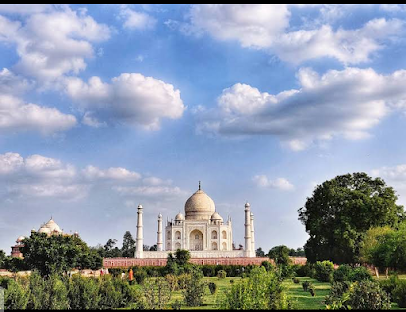
Taj Mahal Agra -Tour Guide By Imran Khan Department of Tourism /government of India/incredible India
Discover the enchanting Taj Mahal with Imran Khan's expert tours, blending history, beauty, and cultural insights in Agra's most iconic landmark.

Char Bagh
Explore the serene beauty of Char Bagh, a historical garden in Agra with stunning views of the Taj Mahal, ideal for relaxation and photography.

Kandhari Begum Tomb
Explore the rich heritage of Mughal architecture at Kandhari Begum Tomb in Agra, a serene historical landmark perfect for history lovers and photographers.

Unmissable attractions to see
Mehtab Bagh
Experience the serene beauty of Mehtab Bagh, where stunning views of the Taj Mahal and lush landscapes await you in Agra.

I LOVE AGRA photo point
Discover the enchanting views of the Taj Mahal at I LOVE AGRA Photo Point – a must-visit for every traveler exploring Agra.
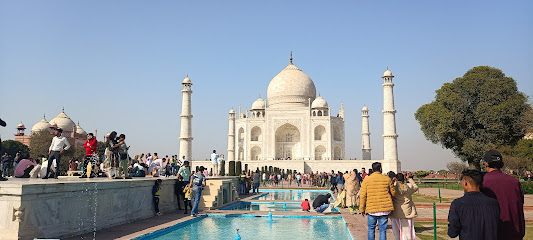
Taj View Point ADA
Experience the breathtaking views of the Taj Mahal at Taj View Point, a serene and picturesque must-visit attraction in Agra.

Taj Museum
Explore the Taj Museum, a gateway to India's rich history and exquisite artistry, right next to the Taj Mahal in Agra.

Taj Yamuna View Point
Experience the stunning beauty of the Taj Mahal from the serene Taj Yamuna View Point, a perfect blend of nature and architecture in Agra.

Taj Protected Forest
Experience tranquility at Taj Protected Forest in Agra - a lush park perfect for nature walks and relaxation amidst rich biodiversity.

Shahjahan Garden
Experience tranquility at Shahjahan Garden, a lush oasis in Agra near the Taj Mahal, perfect for relaxation and stunning photography.

Mughal Garden
Discover the serene beauty of Mughal Garden in Agra, a perfect blend of nature and Mughal architecture, ideal for relaxation and exploration.

INCREDIBLE INDIA TOURIST GUIDE AGRA
Explore Agra, India: Home to the Taj Mahal, rich history, vibrant markets, and unforgettable culinary experiences.

Essential places to dine
The Salt Cafe
Discover diverse flavors at The Salt Cafe near the Taj Mahal—where American comfort meets Indian tradition in a vibrant setting.

Good Vibes Cafe
Discover culinary delights at Good Vibes Cafe in Agra—where local flavors meet global cuisine in a cozy atmosphere.

Heart of Taj Café & Kitchen - Agra
Discover authentic North Indian cuisine at Heart of Taj Café & Kitchen in Agra – where family-friendly dining meets delicious flavors.

Taj Mahal Restaurant , mughlai cuisine.
Experience authentic Mughlai cuisine at Taj Mahal Restaurant in Agra – a culinary delight near the iconic Taj Mahal.
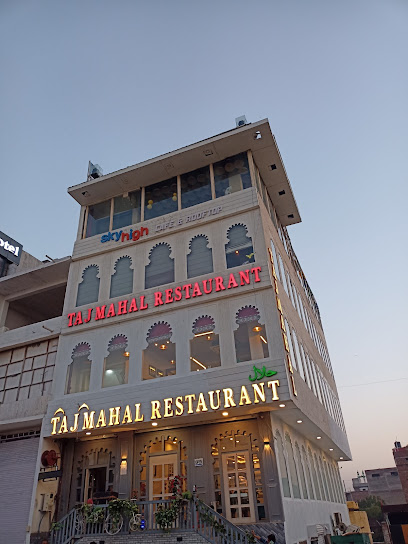
Esphahan
Experience luxury dining at Esphahan with exquisite Mughlai cuisine and stunning views of the Taj Mahal in Agra.

Shankara Vegis Restaurant
Experience authentic vegetarian Indian cuisine at Shankara Vegis Restaurant, conveniently located near the Taj Mahal in Agra.
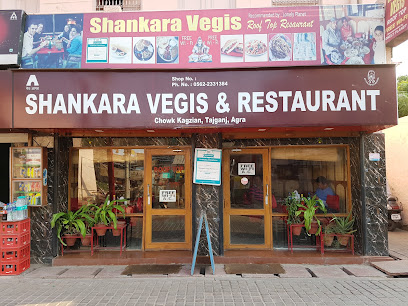
Taj Terrace
Discover diverse culinary delights at Taj Terrace near the Taj Mahal; indulge in Indian, Mughlai, Chinese & Continental cuisine.

Pashtun || Best Restaurants In Agra For Lunch, Dinner, And Couples Near Taj Mahal
Experience exquisite Indian cuisine at Pashtun near the Taj Mahal – where culinary excellence meets cultural heritage.

Amazing Restaurant
Experience authentic Indian cuisine at Amazing Restaurant in Agra – where every dish tells a story.

Taj Cafe Restaurant A/C ROOF TOP
Discover a culinary oasis at Taj Cafe Restaurant A/C ROOF TOP in Agra, where authentic Indian flavors meet stunning rooftop views.

Markets, malls and hidden boutiques
Firstcry.com Store Agra Fatehabad Road
Explore Agra's Firstcry.com Store for a comprehensive selection of baby products, from clothing to toys, ensuring quality and convenience for parents.

ZUDIO - AGRA, FATEHABAD ROAD
Explore ZUDIO in Agra for stylish clothing and accessories that reflect the vibrant culture of India, perfect for every fashion enthusiast.

Unique Handicrafts
Explore Unique Handicrafts in Agra for authentic local artistry and exquisite souvenirs that capture the essence of Indian culture.

Marble Art &Handicrafts
Explore the exquisite craftsmanship of Marble Art & Handicrafts in Agra, where every piece tells a story of tradition and artistry.

KINGS BY KSR - Best Clothing Shop
Explore the latest fashion trends at Kings by KSR, Agra's leading clothing store offering stylish apparel for all ages.

Gems & Art Gallery
Experience the rich cultural heritage of India at Gems & Art Gallery, where exquisite jewelry and handicrafts await you in Agra.
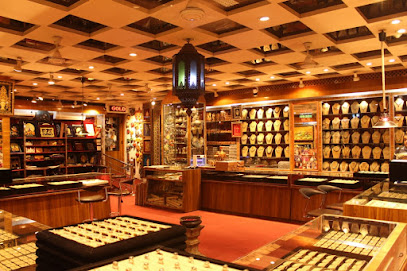
Gem Jewellery & Handicraft Gallery
Explore the exquisite artistry of India at Gem Jewellery & Handicraft Gallery, where every piece tells a story of craftsmanship and heritage.

Organic India Store - Tajganj, Agra
Discover a treasure trove of organic products in Agra's Organic India Store, where wellness meets sustainability for conscious travelers.

The Warehouse of Gifts & Souvenirs
Explore the best of Agra's craftsmanship at The Warehouse of Gifts & Souvenirs, offering unique gifts, handicrafts, and jewelry near the Taj Mahal.

New Taj Emporium
Explore New Taj Emporium, a treasure trove of traditional Indian handicrafts near the Taj Mahal, perfect for unique souvenirs and cultural experiences.

Essential bars & hidden hideouts
The Salt Cafe
Experience the vibrant atmosphere and diverse cuisine of The Salt Cafe, a culinary gem near the Taj Mahal in Agra, India.
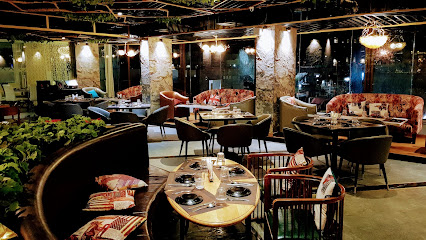
Molecule Agra
Experience exquisite dining and vibrant nightlife at Molecule Agra, the premier bar and restaurant in Agra's Tajganj.

ITC Mughal, Maikhana - The Lobby Bar
Indulge in the luxurious flavors of Mughlai cuisine at ITC Mughal's Maikhana - The Lobby Bar, a premier dining destination in Agra.

LORD OF THE DRINKS AGRA
Discover the elegance of Agra at Lord of the Drinks, a luxurious lounge offering stunning views and a delectable menu for all tastes.

Cafe Chilam Bar & Bistro
Discover the perfect blend of local flavors and a cozy atmosphere at Cafe Chilam Bar & Bistro in Agra.

Pub Zee bar and lounge
Discover the vibrant nightlife of Agra at Pub Zee Bar and Lounge, serving delightful grilled dishes and refreshing drinks in a lively atmosphere.

Patiala House Rooftop Cafe - Best Rooftop cafe in Fatehabad Road, Agra
Experience the best rooftop dining at Patiala House Rooftop Cafe, where exquisite cuisine meets breathtaking views in the heart of Agra.

The Bar
Experience luxury and relaxation at The Bar in Agra, where exquisite cocktails meet stunning views of the Taj Mahal.

Onyx Bar
Experience the luxurious ambiance of Onyx Bar in Agra, where handcrafted cocktails meet local flavors in a stunning setting.

The Lounge
Experience unparalleled luxury and breathtaking views of the Taj Mahal at The Lounge, Oberoi Amarvilas—your serene escape in Agra.

Local Phrases
-
- Helloनमस्ते
[Namaste] - Goodbyeअलविदा
[Alvida] - Yesहाँ
[Haan] - Noनहीं
[Nahi] - Please/You're welcomeकृपया
[Kripaya] - Thank youधन्यवाद
[Dhanyavaad] - Excuse me/Sorryमाफ़ कीजिए
[Maaf kijiye] - How are you?आप कैसे हैं?
[Aap kaise hain?] - Fine. And you?ठीक हूँ। और आप?
[Theek hoon. Aur aap?] - Do you speak English?क्या आप अंग्रेजी बोलते हैं?
[Kya aap angreji bolte hain?] - I don't understandमुझे समझ नहीं आया
[Mujhe samajh nahi aaya]
- Helloनमस्ते
-
- I'd like to see the menu, pleaseकृपया मेन्यू दिखाइए
[Kripaya menu dikhaiye] - I don't eat meatमैं मांस नहीं खाता
[Main maans nahi khata] - Cheers!चियर्स!
[Cheers!] - I would like to pay, pleaseकृपया मैं भुगतान करना चाहूँ
[Kripaya main bhugtan karna chaahoon]
- I'd like to see the menu, pleaseकृपया मेन्यू दिखाइए
-
- Help!बचाओ!
[Bachao!] - Go away!चले जाओ!
[Chale jao!] - Call the Police!पुलिस को बुलाओ!
[Police ko bulaao!] - Call a doctor!डॉक्टर को बुलाओ!
[Doctor ko bulaao!] - I'm lostमैं खो गया/गई हूँ
[Main kho gaya/gayi hoon] - I'm illमुझे बीमारी है
[Mujhe bimari hai]
- Help!बचाओ!
-
- I'd like to buy...मैं ... खरीदना चाहूँगा/चाहूँगी
[Main ... kharidna chaahunga/chaahoongi] - I'm just lookingमैं बस देख रहा/रही हूँ
[Main bas dekh raha/rahi hoon] - How much is it?यह कितने का है?
[Yeh kitne ka hai?] - That's too expensiveयह बहुत महंगा है
[Yeh bahut mehnga hai] - Can you lower the price?क्या आप कीमत कम कर सकते हैं?
[Kya aap keemat kam kar sakte hain?]
- I'd like to buy...मैं ... खरीदना चाहूँगा/चाहूँगी
-
- What time is it?समय क्या हुआ है?
[Samay kya hua hai?] - It's one o'clockएक बजे हैं
[Ek baje hain] - Half past (10)दस बजे बीस मिनट
[Das baje bees minute] - Morningसुबह
[Subah] - Afternoonदोपहर
[Dopahar] - Eveningशाम
[Sham] - Yesterdayकल
[Kal] - Todayआज
[Aaj] - Tomorrowकल
[Kal] - 1एक
[Ek] - 2दो
[Do] - 3तीन
[Teen] - 4चार
[Char] - 5पाँच
[Paanch] - 6छह
[Chheh] - 7सात
[Saath] - 8आठ
[Aath] - 9नौ
[Nau] - 10दस
[Das]
- What time is it?समय क्या हुआ है?
-
- Where's a/the...?... कहाँ है?
[... kahan hai?] - What's the address?पता क्या है?
[Pata kya hai?] - Can you show me (on the map)?क्या आप मुझे दिखा सकते हैं (नक्शे पर)?
[Kya aap mujhe dikhha sakte hain (nakshay par)?] - When's the next (bus)?अगली (बस) कब है?
[Agli (bus) kab hai?] - A ticket (to ....)एक टिकट (.... के लिए)
[Ek ticket (... ke liye)]
- Where's a/the...?... कहाँ है?
History of Taj Ganj
-
Taj Ganj emerged as a significant neighborhood during the Mughal era, particularly under the reign of Emperor Shah Jahan in the 17th century. The construction of the Taj Mahal, a mausoleum for his beloved wife Mumtaz Mahal, transformed the area into a hub for artisans, builders, and laborers who flocked here to participate in this monumental project. The Mughal architecture style, characterized by intricate marble inlay work and grandiose structures, heavily influenced the cultural landscape of Taj Ganj.
-
In the 17th century, as the Taj Mahal was being constructed, local artisans in Taj Ganj became renowned for their craftsmanship. They specialized in intricate marble inlay work, known as 'pietra dura,' which became a hallmark of Mughal art. This tradition not only contributed to the beauty of the Taj Mahal but also established Taj Ganj as a center for artistic production, with generations of artisans passing down their skills.
-
The arrival of the British East India Company in the 18th century brought significant changes to Taj Ganj and Agra. As the British took control, they introduced new administrative structures and urban planning concepts, which altered the traditional way of life. Taj Ganj saw the construction of colonial buildings, roads, and public spaces, reflecting a blend of British and Mughal influences in architecture and urban design.
-
After India gained independence in 1947, Taj Ganj continued to evolve. The neighborhood became increasingly popular with tourists visiting the Taj Mahal, prompting the development of hotels, shops, and restaurants catering to visitors. This shift transformed the cultural dynamics of the area, as local businesses adapted to meet the growing demands of a global audience, while still retaining elements of traditional culture.
-
In recent years, there has been a concerted effort to preserve the rich cultural heritage of Taj Ganj. Various initiatives aim to protect the historical architecture, promote local crafts, and enhance the cultural experience for visitors. The neighborhood is now recognized not only for its proximity to the Taj Mahal but also for its vibrant community that continues to celebrate its historical significance and artistic traditions.
Taj Ganj Essentials
-
Taj Ganj is easily accessible from other neighborhoods in Agra. If you're traveling from the city center, you can take an auto-rickshaw or a taxi, which will take approximately 10-15 minutes depending on traffic. For those arriving by train, Agra Cantt Railway Station is about 4 km away. You can hire a taxi or take a local bus from the station. The nearest airport is Agra Airport, located about 6 km from Taj Ganj, with taxi services available for a quick transfer.
-
Taj Ganj is a walkable neighborhood, especially if you're visiting the Taj Mahal or nearby attractions. Auto-rickshaws are abundant for longer distances, and you can also find cycle rickshaws for a more local experience. Buses run throughout Agra and can connect you to other areas, though they may be crowded. Renting a bicycle is a popular option for those looking to explore at their own pace. Always negotiate the fare with auto-rickshaw drivers before starting your journey.
-
Taj Ganj is generally safe for tourists, but standard precautions are advisable. Petty crimes such as pickpocketing can occur in crowded areas, so keep your belongings secure. Avoid venturing into poorly lit or deserted streets at night. Areas around the main bazaar can be busy, so stay alert. It’s best to avoid the outskirts of the neighborhood after dark, where incidents have been reported.
-
In case of an emergency, dial 112 for police assistance and 108 for medical emergencies in India. Local hospitals and clinics are available in Taj Ganj, but it's advisable to have travel insurance that covers medical issues. For minor ailments, pharmacies can be found throughout the neighborhood. Always keep a list of emergency contacts, including your country's embassy number.
-
Fashion: Do dress modestly, especially when visiting the Taj Mahal and other religious sites. Avoid wearing shorts or revealing clothing. Religion: Do respect local customs; cover your head when entering mosques. Public Transport: Do give your seat to elderly passengers. Don’t eat or drink on public transport. Greetings: Do greet locals with a friendly 'Namaste.' Eating & Drinking: Do try local street food, but avoid drinking tap water. Don’t refuse food offered by locals, as it’s a sign of disrespect.
-
To experience Taj Ganj like a local, visit the bustling markets where you can find handicrafts and traditional snacks. Engage with local vendors; many are eager to share stories about their crafts. Try the local street food, especially chaat and parathas, but choose stalls that are busy and have a good turnover. Visit the lesser-known monuments, like the Itimad-ud-Daulah's Tomb, for a quieter experience. Lastly, consider joining a guided walking tour to learn more about the area's rich history.
Nearby Cities to Taj Ganj
-
Things To Do in Gwalior
-
Things To Do in Delhi
-
Things To Do in Ranthambore
-
Things To Do in Jaipur
-
Things To Do in Kanpur
-
Things To Do in Lucknow
-
Things To Do in Rishikesh
-
Things To Do in Pushkar
-
Things To Do in Bhopal
-
Things To Do in Shimla
-
Things To Do in Lumbini
-
Things To Do in Jabalpur
-
Things To Do in Jodhpur
-
Things To Do in Udaipur
-
Things To Do in Varanasi








